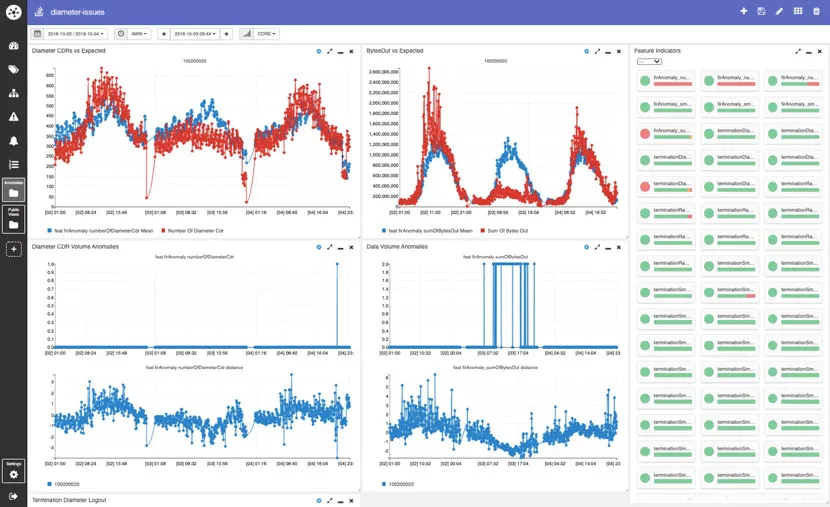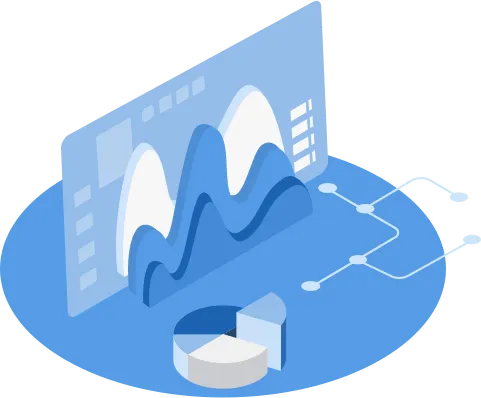
Struggling with IoT monitoring to identify anomalies before they affect your customers?
IoT devices generate a massive amount of data, which can be difficult to collect, store, and analyze. This makes it challenging to identify patterns and anomalies in the data.

Are you still manually monitoring and analyzing failures in IoT devices?
By the end of 2024, there are more than 207 billion IoT devices projected to be connected worldwide. Manually tracking and resolving failures in diverse IoT devices within a telecom network is labor-intensive and time-consuming. This increases the risk of service disruptions and impacts the overall efficiency of the IoT network.
- Extensive and heterogeneous data volume
- Manual monitoring increases networks disruptions
Are you able to predict the Root Cause Analysis of your network incidents?
IoT networks’ complexity and scale complicate root cause identification of incidents, particularly those involving multiple devices or networks. The vast, often incomplete, or noisy data generated by these networks further obscures pattern recognition and anomaly detection. Additionally, the real-time demands of many IoT applications pose a challenge for Root Cause Analysis (RCA) prediction algorithms due to their computational intensity.
- Complexity in identifying incident causes. disadvantage
- Difficulty in detecting potential anomalies.


Can you handle the complexity and heterogeneity of several IoT networks?
Statista reports that while an average SME manages 100 IoT devices, a Tier 1 Telco vendor, for example, can oversee hundreds of IoT networks and tens of millions of diverse IoT devices. IoT networks’ ever-growing interconnectivity makes it challenging to identify and manage dependencies. Compatibility issues can arise due to the diverse range of devices and networks.
- Growth in the number of IoT devices complicates scaling.
- Compatibility and interconnectivity requirements complicate network management.
Tupl’s IoT Assurance supports Telco Operators to fully automate operations over their customers' IoT networks
What benefits can you expect
from AI Care?
Zero Touch
0
x
+MTTR
0
%
Consistency
0
%
The IoT Assurance solution is applied as a zero-touch automation agent for predictive maintenance of IoT networks
IoT Assurance provides co-pilot automated analysis
- Data Integration: It includes "Radius CDRs”, "Diameter CDRs," and SMS CDRs, among others.
- Granular Analysis: It classifies potential issues based on communication mechanisms, payload usage, and various configurations.
- Auto-Detection of Anomalies: It employs machine learning for real-time auto-detection of anomalies.
- Root Cause Analysis: It offers insights into incidents allowing the auto-closing of resolved issues.
- Visualizations and KPI Analysis: It includes real-time anomaly graphs and customizable views for analyzing KPIs.
Get a demo of IoT Assurance monitoring software today
Get started and request a demo to learn how IoT Assurance can help you.
Frequently Asked Questions
Below you will find answers to the most common questions about IoT Assurance.
What is IoT Assurance monitoring solution?
Tupl IoT Assurance solution is a zero-touch automation agent that increases efficiency through automation to handle customer failures. It provides a full and fast automated analysis and auto-response for closed-loop notification, including impact. It also applies anomaly detection and RCA to IoT devices in order to open tickets proactively even before the customer notices the issue.
How does IoT Assurance predictive maintenance work?
Tupl IoT Assurance solution works by analyzing the network flow and detecting any potential issues that may arise. It can predict problems before they occur, or even automatically solve them without needing to send a notification. For example, it can predict power outages at a power station that would cause the IoT devices to lose signal.
How does IoT Assurance classify and detect anomalies in IoT networks?
The solution classifies potential issues by analyzing communication protocols, payload usage, and device configurations. It employs machine learning for auto-detection of anomalies, grouping them into incident tickets and master tickets for efficient issue resolution.
How does Tupl SaaS work?
IoT Assurance SaaS is delivered in cloud service (e.g. AWS, Azure, etc.) and can also be deployed on-premises, in your private cloud or data center.
It is easy and quick to get started, fit for a faster procurement process, with a functional solution in operation within a week.
Monthly subscription. No strings attached. Stop at any time.
